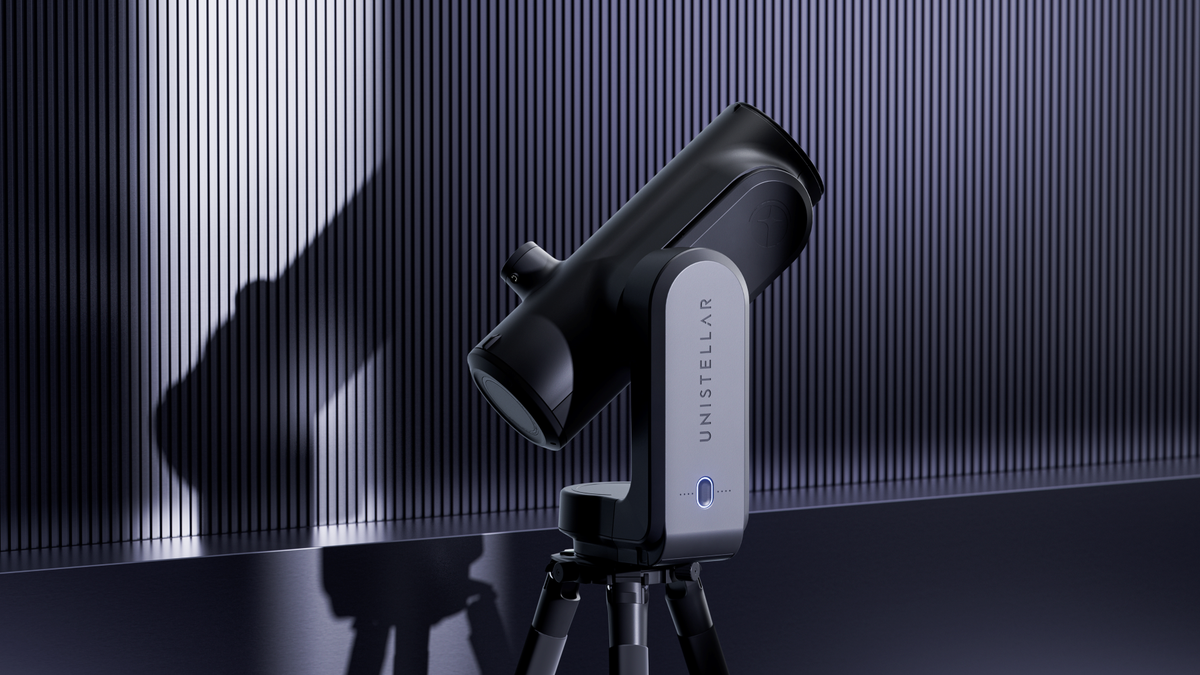
The winter nights could also be lengthy, however they don’t should be boring, even for people with small residences who don’t have room for an additional huge telescope. Unistellar’s newest telescope, the Odyssey, is half the dimensions and fewer than half the burden of the corporate’s final huge launch from 2023. Nonetheless, with just a few faucets in your cellphone, it nonetheless makes it simpler than ever to zoom in in your favourite planet, star, nebula, or distant galaxy.
Final 12 months’s Unistellar mannequin, the eQuinox 2, additionally contained one lengthy telescope that connects to customers telephones. Nonetheless, its biggest selling point was the light pollution filters that have been presupposed to make it a bit simpler to see past the clean night time skies of suburban or semi-urban environments. That mannequin was additionally geared towards newbies, and it labored effectively in that regard throughout Gizmodo’s personal exams, however Unistellar is selling this newest telescope as being even higher than earlier than at serving to beginner astronomers get began stargazing.
You see, the place the corporate’s earlier telescope was a digital reflector telescope, the $2,500 Odyssey is utilizing mirror optics co-developed with lense-maker Nikon that also makes use of the corporate’s similar automated adjustment capabilities to seek out planets and stars by typing within the desired celestial object into the Unistellar app. Mirror telescopes usually require readjustment after use. Nonetheless, Unistellar co-founder and CEO Laurent Marfisi instructed Gizmodo the Odyssey modifications it up by containing sealed mirrors that don’t lose their optimization.
Marfisi mentioned that the eQuinox was designed in such a manner that overseas objects, like distant galaxies or nebulae, got here in clear, whereas nearer our bodies, like planets, have been barely extra out of focus. The large push for the Odyssey was to make it so each distant and nearer objects got here in with the identical diploma of readability. The corporate calls this its “Multi-Depth Know-how,” nevertheless it primarily robotically runs completely different gentle sensitivity and pixel decision settings relying on the thing you’re making an attempt to view. The autofocus ought to make it a hands-off expertise, getting the very best focus settings whether or not the telescope is targeted on Mars or the Dumbell Nebula.
The opposite huge replace this 12 months is to the Unistellar app itself. The Unistellar CEO mentioned the corporate adjusted it to supply extra context and historical past in regards to the moon, planet, or star they’re .
The $2,500 Odyssey doesn’t have an eyepiece, so it’ll require that you simply join your pill or cellphone as a way to gander at these far-off celestial objects. If you would like one thing you may view with your individual eyes, you’ll should shell out $4,000 for the Odyssey Professional, which incorporates a Nikon digital eyepiece for these private optics.
In case you’re actually hungry for one thing particular, the hearth engine pink colour model of the Odyssey Professional will set you again $4,500. It needs to be out there beginning Sunday on Unistellar’s website or different on-line retailers.
Gizmodo is reporting stay on all the good and weirdest tech from the present ground all week at CES 2024 in Las Vegas. Make sure you examine all the newest protection right here.
Trending Merchandise

















